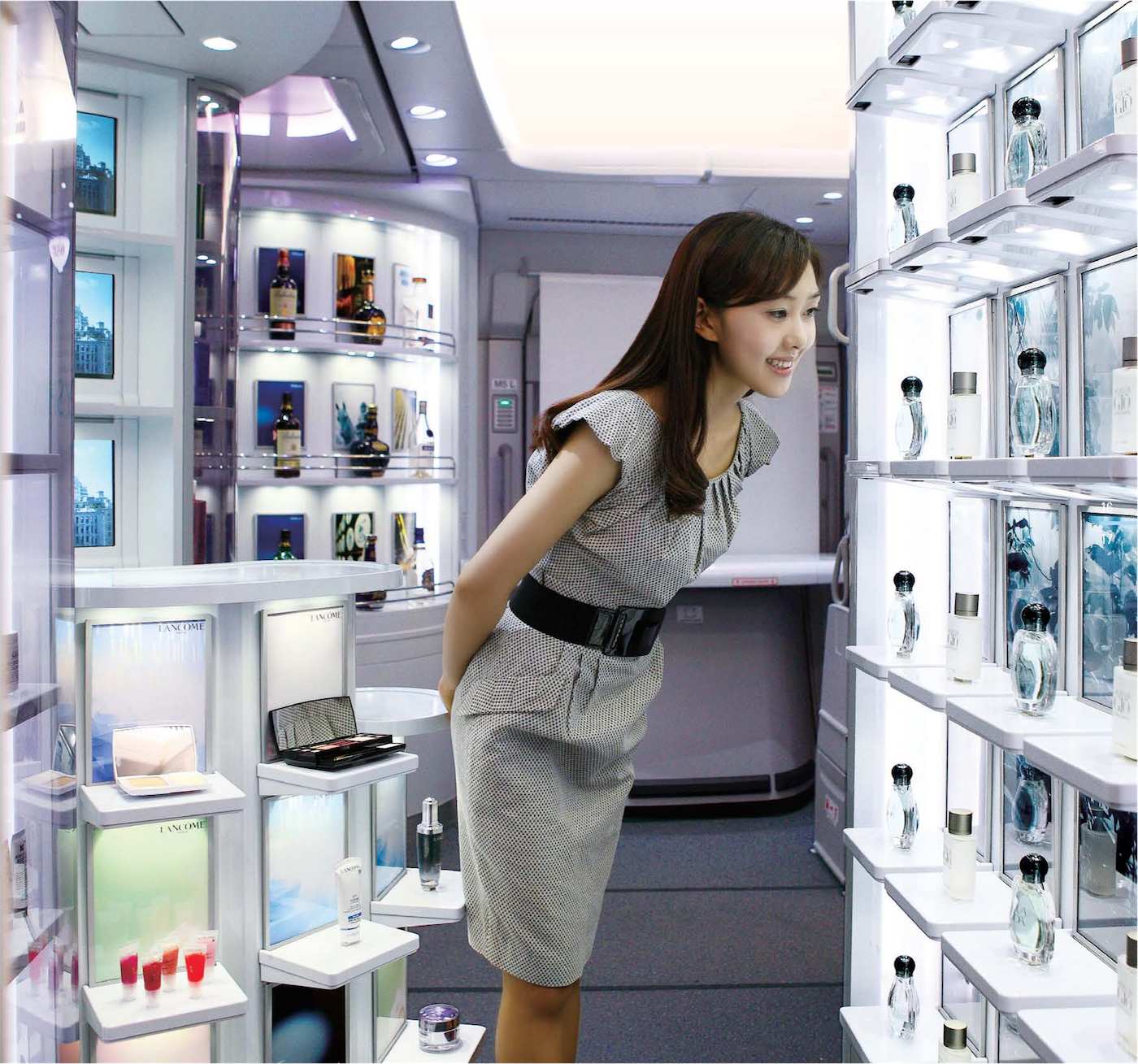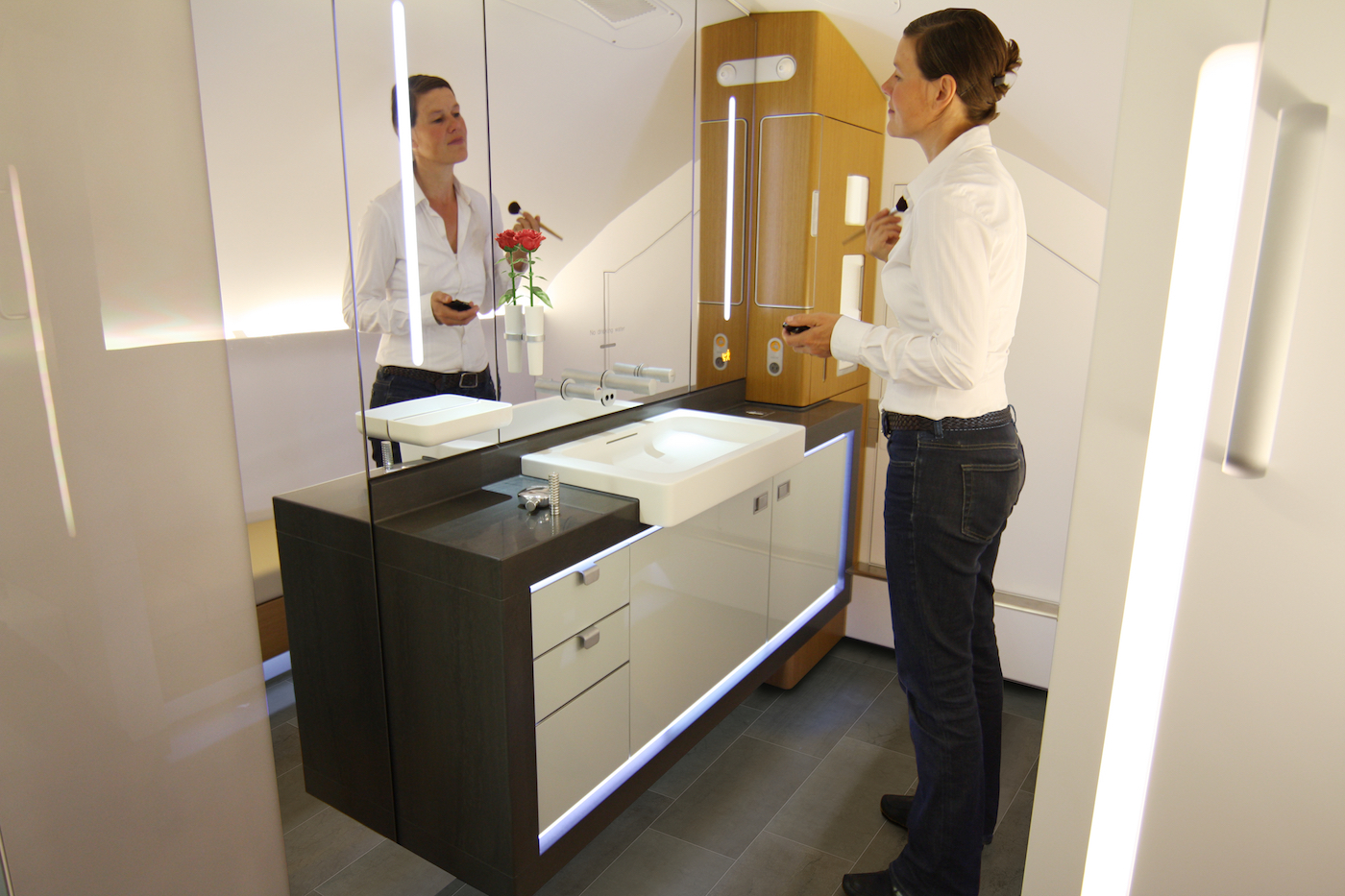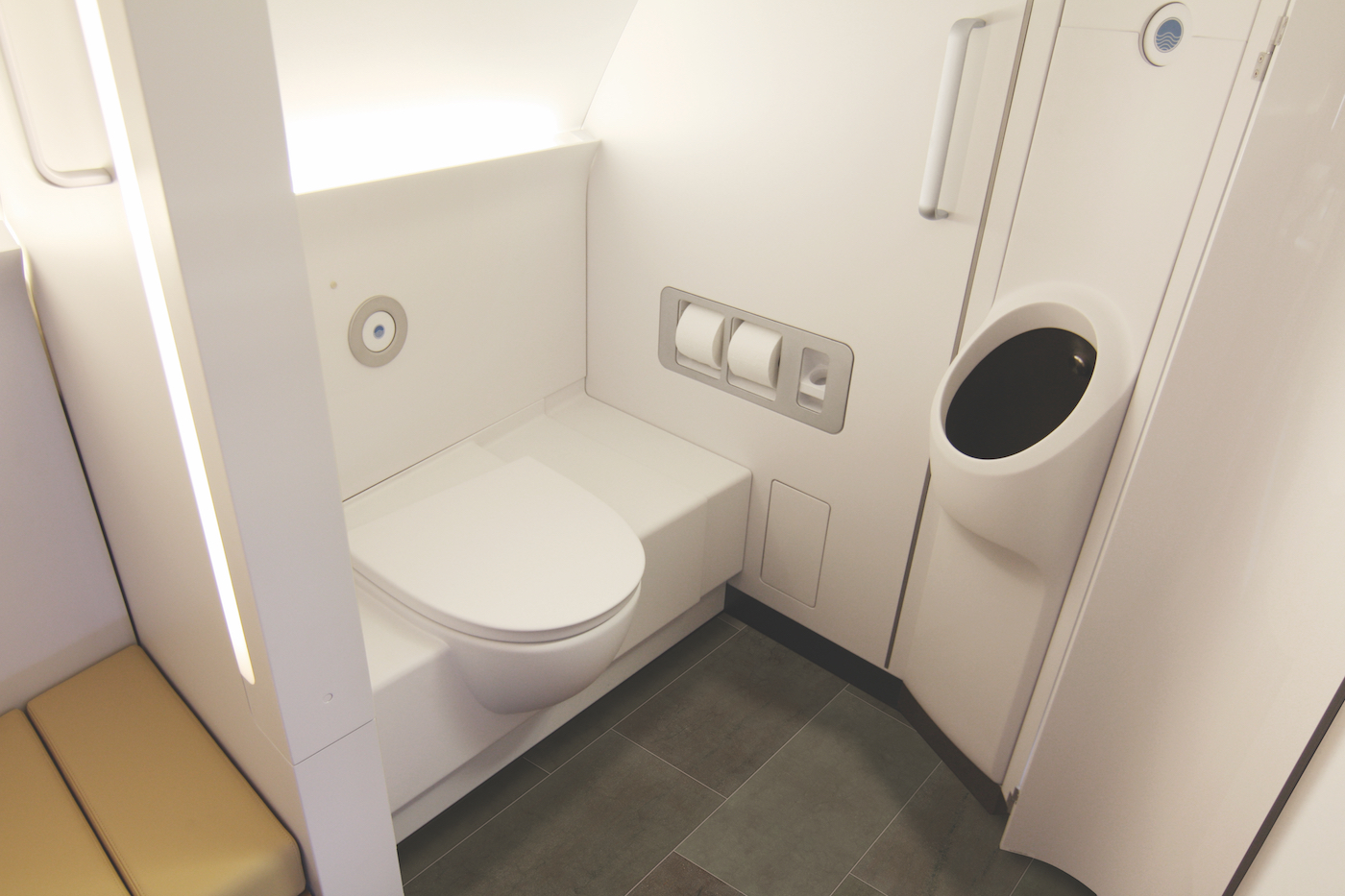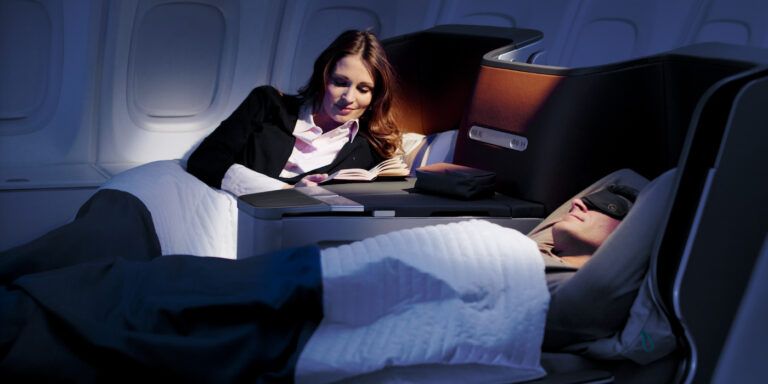If men are from Mars and women are from Venus, the cramped, plastic confines of an airliner are the native habitat of neither. But there are some things airlines and aircraft makers can do to accommodate the distinctive needs of both.
“Men and women use all products differently, including aircraft cabins,” says Carrie McEwan, human factors specialist at Seattle-based design consultancy Teague. “There are physical differences between genders that can force variation in use. Two key physical capabilities are size and strength, but there are also cognitive and cultural differences between genders.”
Sitting comfortably?
“There are differences between men and women in physical dimensions, such as seated height, reach and hip breadth,” McEwan continues. So seat builders have to accommodate a wide range of potential sitters. Physical differences can also affect the user’s experience with windows, bins and lighting, according to McEwan.
The new composite fuselages on Boeing’s 787 Dreamliner and Airbus’s A350 XWB allow larger windows. They let in more light, pleasing most passengers, while also ensuring a good view for a wider range of differently sized people.
Boeing’s latest bins include latches that open by pulling up or down, suiting different people, and mirrors that let shorter people see if they’ve left anything up there. Many seats now have built-in steps to help with bin access. Putting light and fan controls in the seat also helps accommodate smaller people, male or female.

The addition of storage space in business and first classes also creates the opportunity to ensure that spaces meet needs of men and women, notes Diego Kolsky, creative director and partner at MBLM.
“Men are more likely to have a briefcase or computer bag,” he says. “Women bring more than one bag, whereas men usually don’t.”
These days business and first-class cabins tend to focus on cocooning passengers from each other in posh pods. “The seats are designed specifically to separate and give private space to passengers,” Kolsky notes.
“But that doesn’t necessarily serve the needs of women flying with children,” he adds. “Recently we were talking with an airline about its premium cabin and it pointed out that in Latin America and the Middle East, for instance, it’s not unusual to see 10 children in the business or premium cabin.”
That could mean bringing back more seats abreast, according to Kolsky. “We were in a meeting where part of the decision was, on a wide-body aircraft, should we have three-abreast in the middle? The discussion went around and around on how to accommodate families while still ensuring privacy and not making people climb over each other and over big consoles. It was excruciating.”
Some premium seats now have walls that go up and down, so passengers can decide for themselves how much privacy they want. But these seats still have big consoles between them, Kolsky notes. “It wouldn’t be easy to interact with a child next to you.”

Luke Hawes, a director at London-based design firm PriestmanGoode, agrees. “The major difference between men and women in an aircraft environment is the amount of privacy they require. Women will use pyjamas more than men, and will get cosy and fall asleep faster. A lot of female passengers prefer higher levels of privacy when asleep, while a many male passengers aren’t so bothered. That’s why you need flexible privacy. Flexibility is the way forward.”
Kolsky doesn’t expect to see cabins designed specifically with gender in mind. “It’s all still driven by studies on who is the average passenger,” he said, adding that the idea is to “balance the elements so that nobody feels excluded”.
Singapore Airlines regularly carries out customer research to find the latest trends and passenger needs. Spokesman Nicholas Ionides says. “The information gained helps to drive the design of our new seats as well as our cabin development programme. This information is, however, not targeted according to gender, as needs such as comfort, space and privacy are universal.”
When it comes to seat layout, Singapore Airlines’ last survey “indicated that customers value personal space and like having direct access to the aisle”, Ionides reports. “They would also like to see full-flat beds as a norm in business class.”
Thus the business-class seats on the airline’s A340-500, A380 and 777-300ER jets, along with some 777-200ERs, are laid out in a 1-2-1 configuration and lie fully flat.
Direct aisle access is also important in Hawes’s eyes, as he states, “One of the biggest problems is the step-over. If you’re in the window seat and need to step over the person next to you in the night, you need to be careful. While airlines can’t give up space, you can’t have people stepping over a waist – only feet.”
However, things are getting better towards the rear of the aircraft, as Hawes continues, “A seat has to be adaptable enough to make sure everyone is comfortable, whatever their shape or size. If you want to cuddle your children, it’s particularly difficult in economy class – though it is getting better, with arms that fold flush and seat pans that are closer together. Seats are also generally getting wider as they need less metalwork in between – it’s all going in the right direction”
Toilet tales
All sorts of gender differences apply in aircraft lavatories, McEwan adds. “Some differences are biological, such as standing versus sitting, and some are cultural, such as applying make-up. Both genders also have spatial requirements driven by physical size differences that must be factored into the design and layout of lavatories.”
These days aircraft lavatories often include such features as bidets with ‘his and hers’ settings, better lighting and, in forward classes, more room to lay out and apply accoutrements.

“There have been great advances,” Kolsky says. “The lighting inside the lavatories has become dramatically better, along with the placement of mirrors and the type of lights you get.”
But lavatories are still “a very constrained location”, he added.
Tailored touches
An area where airlines can make something out of gender is in the experience of flying, Kolsky states.
“When you start thinking of the whole passenger journey, you could find touch points or moments when you could think of the differences in genders and make the experience better and more attuned to the specific passenger,” he says. “That’s where small details would go a long way.”
In-flight entertainment offerings are increasingly micro-targeted “not just to women and men, but to women of a certain age and men of a certain age”, he adds. But amenities “are kind of stuck in time. You’re still getting a lot of the same perks and, frankly, things that nobody uses”.
Rather than handing out a prepackaged bag of goodies, airlines could focus on giving something special to each passenger, customised to gender and other factors.
Singapore Airlines adds certain touches for women, such as dust bags in the suites and in first class for their handbags,” Ionides notes.
Jenny Ruegamer, associate creative director at Teague, also sees opportunities in tailoring the flight experience. “In trying to address and design for so many different needs, the flight experience can become a bit flat,” she states. “Airlines need to understand their passenger, so that they can offer targeted, customised experiences.”
Ruegamer witnessed the power of this on a recent EVA Air Hello Kitty flight. “The flight was everything Hello Kitty – from the aircraft’s exterior to shaped food and branded toilet paper,” she recounts. “It was the only flight I’ve been on where most of the business-class passengers were young women.”
Food for thought
According to a survey of over 100 female business travellers relating to inflight meals, 76% of women surveyed feel that airlines are not doing enough to cater to their needs. Website maiden-voyage.com, a business travel network for professional women, and inflightfeed.com, which focuses on pre-order and buy-onboard airline meals, ran an independent survey among professional women around the world to find out what they really want from airline meals.
Of the women surveyed, 76% stated that meals were either too heavy in carbohydrates or more suited to men. Of those women flying with airlines that only offer buy-onboard food, only 20% said that they would purchase something and over 40% stated that they pre-plan their meals for their flight. This could be an opportunity for airlines to improve their buy-on-board offerings.
Carolyn Pearson, CEO of maiden-voyage.com, confirms this view. “Female business travellers are typically more diet conscious than ever. They are more likely to buy a healthy snack before boarding a flight because they cannot be sure what will be on offer on board. Airlines could increase their inflight revenues by ensuring that they offer healthy options and make sure that their passengers are aware of that before they shop elsewhere.”





